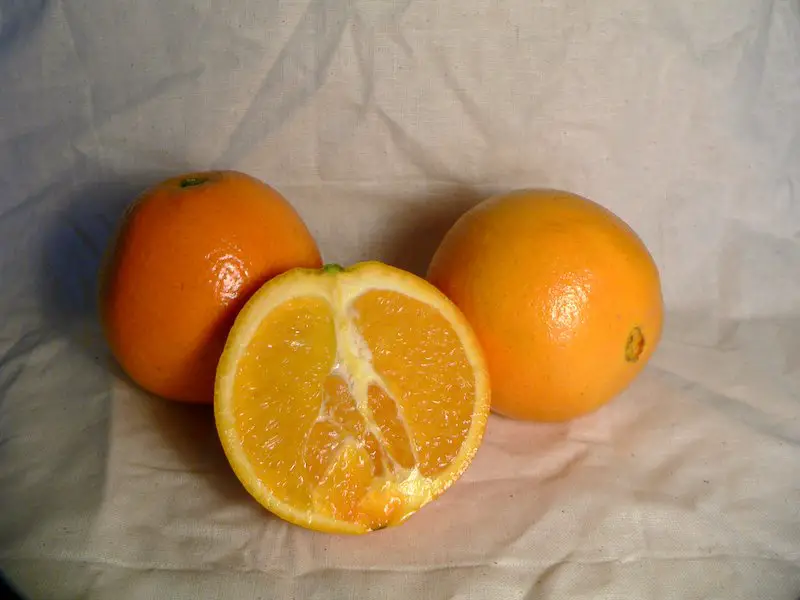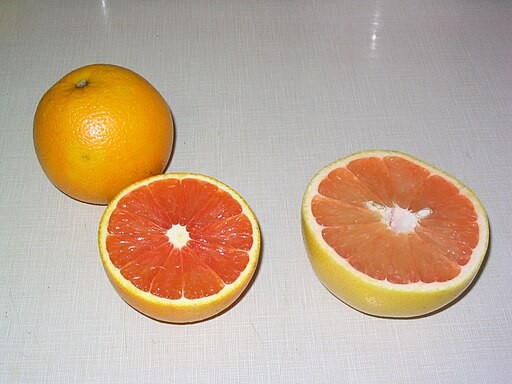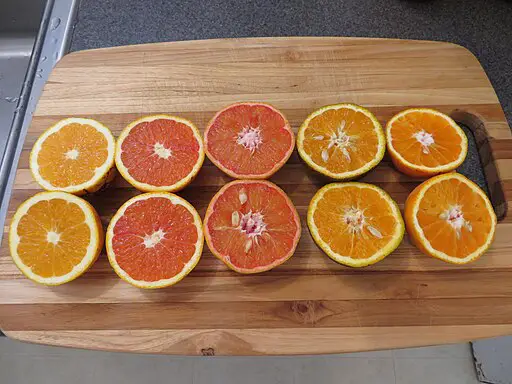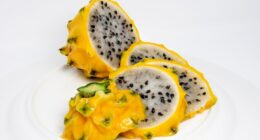Navel oranges are known for their bright orange color, easy-to-peel skin, and seedless nature. They have a sweet and slightly tangy flavor that is loved by many. Cara Cara oranges stand out with their pinkish-red flesh and sweeter taste compared to navel oranges.
Navel Oranges

Navel oranges, prized for their sweet, seedless, and easy-to-peel characteristics, are a popular citrus fruit. Named for the navel-like indentation on one end, these oranges are predominantly available in winter.
Known for their vibrant orange color and juicy, flavorful flesh, they are a refreshing snack and a versatile ingredient in salads, desserts, and beverages. Rich in vitamin C and other nutrients, navel oranges contribute to a healthy diet.
With a delightful combination of sweetness and acidity, navel oranges have become a beloved citrus variety globally, enjoyed both fresh and incorporated into various culinary delights.
Cara Cara Oranges

Cara Cara oranges, a vibrant citrus variety, distinguish themselves with their pink to red flesh and sweet, low-acid flavor.
A crossbreed between Washington and Brazilian Bahia navel oranges, they are available in late fall and winter. The unique color and a hint of berry-like undertones make them visually appealing and delicious.
These oranges are prized for their antioxidant-rich content and are a nutritional powerhouse. Offering a refreshing and slightly tangy taste, Cara Caras are enjoyed fresh, in salads, desserts, or as fresh-squeezed juice, adding a burst of color and flavor to culinary creations.
Navel Oranges Vs. Cara Cara Oranges – Key differences
| Aspect | Navel Oranges | Cara Cara Oranges |
|---|---|---|
| Flesh Color | Typically has a standard orange flesh color. | Distinguished by pink to red-colored flesh. |
| Flavor Profile | Sweet with a balance of acidity. | Sweeter and often described as having berry-like undertones. |
| Harvest Season | Mainly available in winter. | Available in late fall to early spring. |
| Appearance | Bright orange peel with a standard citrus appearance. | Pink to red hue on the inside, making them visually distinctive. |
| Nutritional Content | Rich in vitamin C and other nutrients. | Similar nutritional benefits, with added antioxidants from the red pigments. |
| Taste | Sweet and mildly tangy. | Sweeter and less acidic, with subtle berry notes. |
| Uses | Consumed fresh, juiced, or used in various culinary applications. | Enjoyed fresh, in salads, desserts, and as a colorful addition to dishes. |
| Origin | Traditional navel oranges are a natural variety. | A hybrid variety resulting from the crossbreeding of two navel oranges. |
Navel Oranges Vs. Cara Cara Oranges – Health Benefits of Each Type
Navel Oranges:
Rich in Vitamin C: Navel oranges are an excellent source of vitamin C, a powerful antioxidant that supports the immune system, promotes healthy skin, and aids in the absorption of iron.
Dietary Fiber: They provide dietary fiber, aiding digestion and promoting gut health. Fiber also helps regulate blood sugar levels and contributes to a feeling of fullness.
Hydration: With a high water content, navel oranges contribute to hydration and can be a refreshing snack, particularly beneficial in warmer seasons.
Cara Cara Oranges:
Additional Antioxidants: The pink to red pigmentation in Cara Cara oranges indicates the presence of additional antioxidants, potentially providing extra benefits for cellular health and reducing oxidative stress.
Vitamin A: While Navel Oranges have minimal vitamin A, Cara Caras contain beta-carotene, contributing to vitamin A levels important for vision, skin health, and immune function.
Anti-Inflammatory Properties: The combination of vitamin C and additional antioxidants in Cara Caras may contribute to anti-inflammatory effects, supporting overall health.
Navel Oranges Vs. Cara Cara Oranges – Nutritional Differences
| Nutrient | Navel Oranges | Cara Cara Oranges |
|---|---|---|
| Calories | 43 calories | 43 calories |
| Protein | 1 gram | 1 gram |
| Fat | 0.2 grams | 0.2 grams |
| Carbohydrates | 8.3 grams | 8.3 grams |
| Fiber | 2.2 grams | 2.8 grams |
| Vitamin C | 89.1 mg (149% DV) | 128 mg (213% DV) |
| Vitamin A | 11 IU (0% DV) | 0 IU (0% DV) |
| Calcium | 43 mg (4% DV) | 33 mg (3% DV) |
| Iron | 0.1 mg (1% DV) | 0.1 mg (1% DV) |
Note: Percent Daily Values (DV) are based on a 2,000-calorie diet.
Image Credits
Featured Image By – Forest & Kim Starr, CC BY 3.0 US, via Wikimedia Commons
Image 1 By – user:WLU, CC BY-SA 3.0 , via Wikimedia Commons
Image 2 By – Yongxinge, CC BY-SA 3.0 , via Wikimedia Commons








